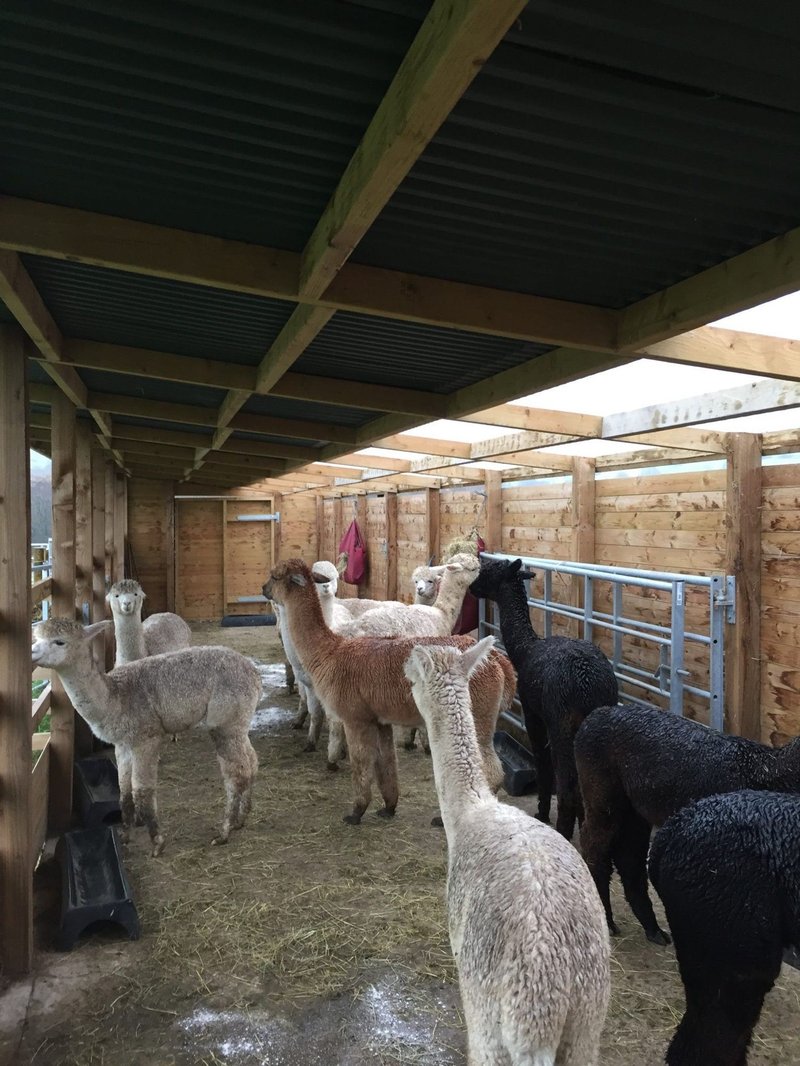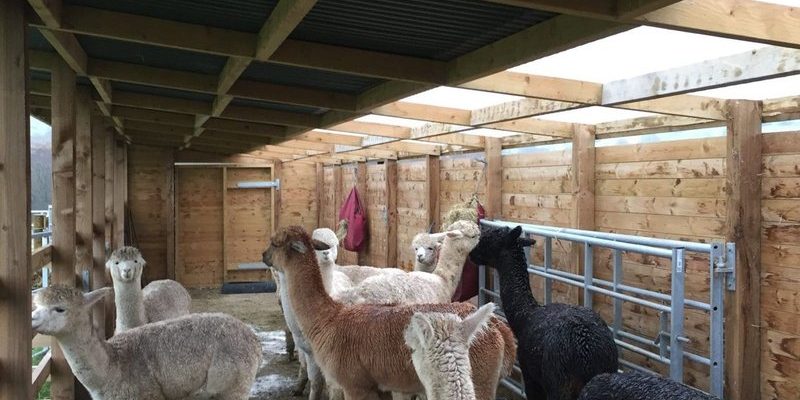
Alpacas are pretty adaptable, but they do have some specific needs when it comes to housing. You wouldn’t want to put your alpacas in any old barn – they deserve a comfortable, safe space that protects them from the weather and keeps them feeling secure. Let’s dive into the nuts and bolts of setting up the perfect shelter for your alpacas. We’ll cover everything from location to design, and even how to keep them cozy during colder months.
Understanding the Basics of Alpaca Shelter
Alpacas thrive in a clean, dry shelter that protects them from rain, wind, and extreme temperatures. Here are a few essential points to consider when thinking about your alpaca’s housing:
- Size Matters: Alpacas are social creatures and prefer to be in groups. Ideally, a shelter should provide at least 40 square feet per alpaca. If you have more than one, this space will allow them to interact without feeling cramped.
- Ventilation: Good airflow is crucial. Stale air can lead to respiratory issues, so ensure your shelter has enough windows or vents. A well-ventilated space helps keep the air fresh and reduces moisture buildup.
- Safety: Make sure the shelter is secure. Alpacas can be skittish, so it’s important to have sturdy fencing and no sharp edges or hazardous materials that could injure them.
These basic principles form the foundation of your alpaca shelter setup. It’s all about giving them a safe haven that meets their needs while allowing their personalities to shine.
Choosing the Right Location for Your Alpaca Shelter
Location is everything when it comes to building a shelter for your alpacas. Here’s what to keep in mind:
- Sunlight and Shade: Alpacas enjoy sunny spots for lounging, but they also need shaded areas to cool off during hot weather. A good mix of both is ideal, so look for a location that receives both sunlight and natural shade from trees or structures.
- Drainage: Consider the land’s drainage capabilities. You don’t want your alpaca shelter to sit in a low-lying area that collects water. Standing water can lead to muddy conditions and health issues for your animals.
- Proximity to Resources: Having your shelter close to food and water sources will make your life easier. It’s a lot more convenient when you don’t have to trek across a field just to refill their water bowl.
By carefully selecting the location of your shelter, you ensure your alpacas have a comfortable and practical living space.
Designing the Shelter Structure
Now that you’ve picked a location, let’s talk about the actual structure of the shelter. Here are some key design elements to think about:
- Open Style: Alpacas prefer open space. A three-sided shelter allows them to enjoy the outdoors while providing enough protection from the elements. Think of it as a cozy nook where they can feel safe yet still enjoy the fresh air.
- Materials: Use sturdy materials like wood for the structure and metal for the roofing. Ensure that the materials are treated to withstand weather conditions in your area.
- Flooring: The ground inside the shelter should be solid and dry. Avoid slippery surfaces, as alpacas can easily injure themselves. Gravel or compacted dirt works well, and you can spread straw for additional comfort.
A well-thought-out design will make the shelter inviting and functional, catering to your alpacas’ natural behaviors.
How to Insulate and Protect Your Alpacas
Depending on your climate, insulating your shelter can be crucial. Alpacas have thick fleece that helps keep them warm, but they still need some help during extreme weather conditions. Here are some tips for keeping your alpacas comfortable:
- Insulation Materials: Use straw bales or foam insulation panels to help keep the shelter warm in winter. Make sure to seal any gaps to prevent drafts, as alpacas don’t like chilly breezes.
- Heating Options: In particularly cold climates, you might consider adding heat lamps. Just be cautious to place them safely out of reach from curious alpacas. You don’t want any accidental singeing!
- Wet Weather Solutions: For rainy days, make sure your shelter has a solid roof that prevents leaks. You can also install guttering to direct rainwater away from the shelter.
These steps will help create a cozy environment where your alpacas can thrive, even when the weather is less than ideal.
Feeding and Water Areas: Keeping it Functional
Creating dedicated feeding and watering areas inside your shelter is essential. Here’s how to make these spaces efficient:
- Feeding Stations: Use hay feeders to keep their food clean and off the ground. This prevents waste and ensures they’re getting the nutrition they need without extra mess. You can DIY with wooden pallets or buy pre-made options.
- Water Access: Choose automatic waterers that refill as needed. This way, your alpacas always have access to fresh water without you needing to fill bowls constantly. Just make sure to check that they’re functioning properly.
- Separate Spaces: If you have multiple alpacas, consider creating separate feeding areas. This helps prevent any food guarding behaviors and allows everyone to eat at their own pace.
By keeping feeding and watering areas clean and organized, you’ll make life easier for both you and your alpacas.
Maintenance Tips for Alpaca Shelters
Regular maintenance is key to ensuring your alpaca shelter remains a safe haven. Here’s what you need to do:
- Cleaning Routine: Set a schedule to clean the shelter regularly. Remove soiled bedding, clean feeding equipment, and ensure the area remains free of debris. This not only keeps the space tidy but also reduces the risk of illness.
- Inspect for Repairs: Regularly check the structure for any necessary repairs. Look for signs of wear and tear, especially after extreme weather. Catching problems early can prevent bigger issues later on.
- Fencing Maintenance: Inspect the fencing around the shelter frequently. Make sure there are no gaps or weak spots that could allow predators access to your alpacas.
By investing a bit of time into maintenance, you can keep your alpaca shelter in top condition, ensuring both the safety and happiness of your furry friends.
Creating the best shelter and housing setup for alpacas might seem overwhelming at first, but it doesn’t have to be. By focusing on their basic needs—size, location, design, and maintenance—you can build a cozy haven where your alpacas can thrive. Always remember to think about their comfort and safety first.
In the end, happy alpacas make for a rewarding experience for any owner. So take the time to understand what works best for them, and you’ll enjoy the company of these gentle, fluffy creatures for years to come!

